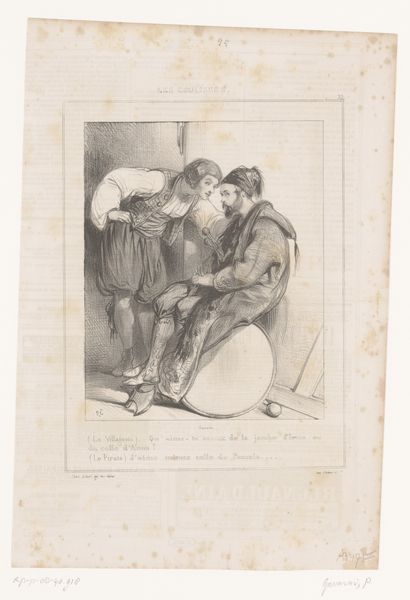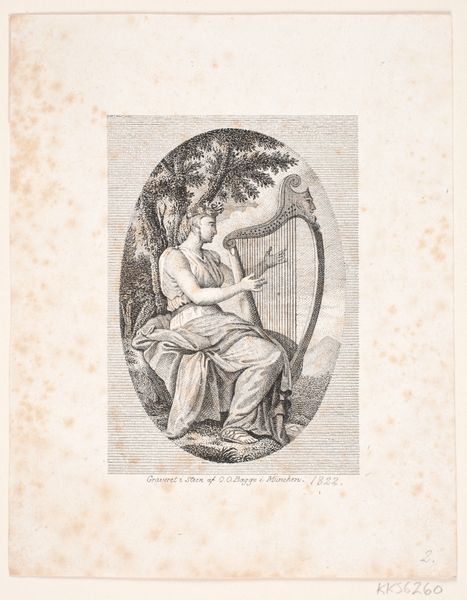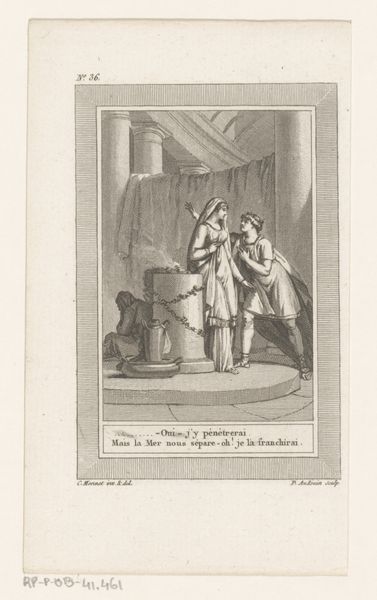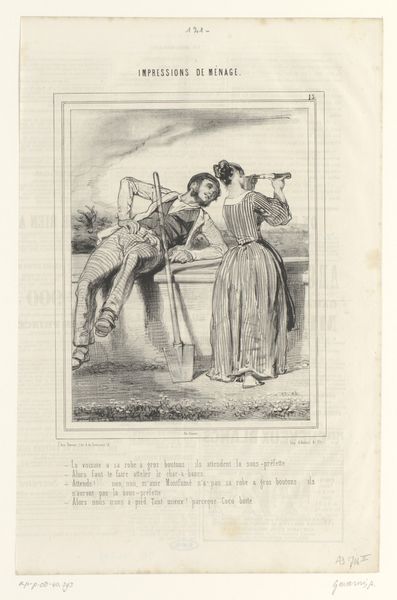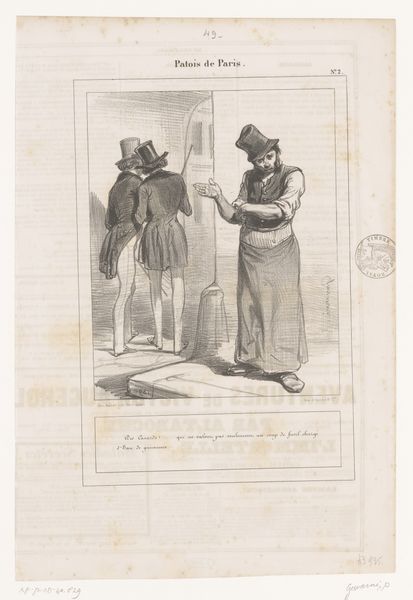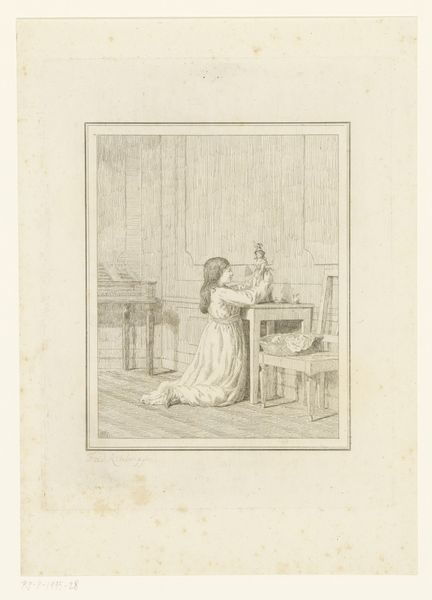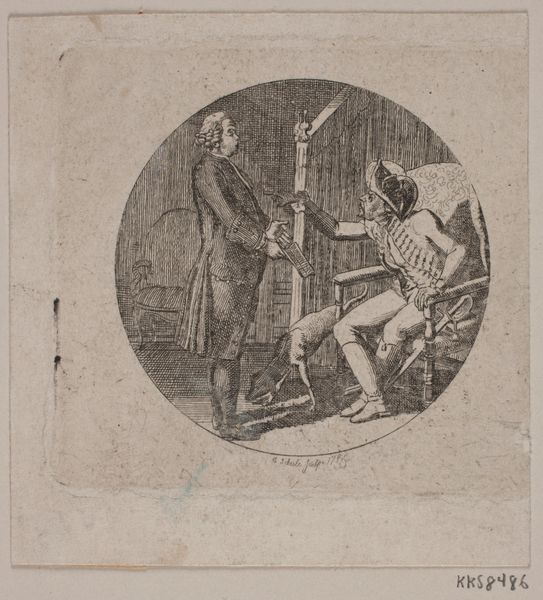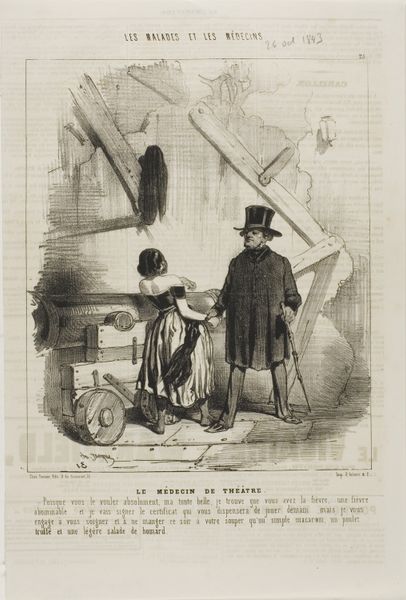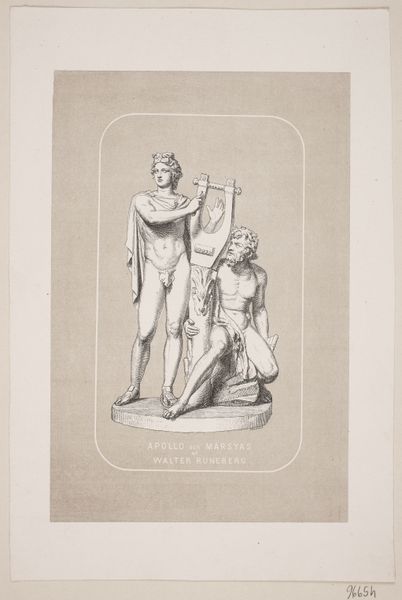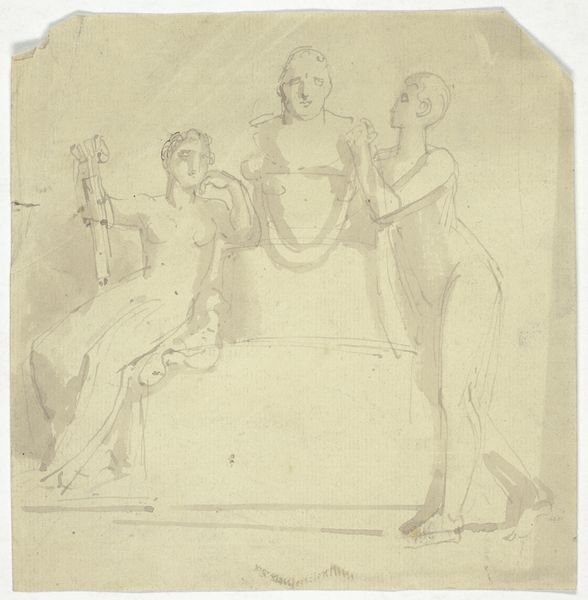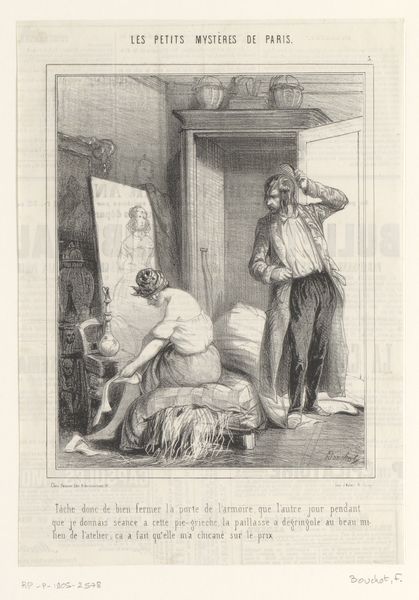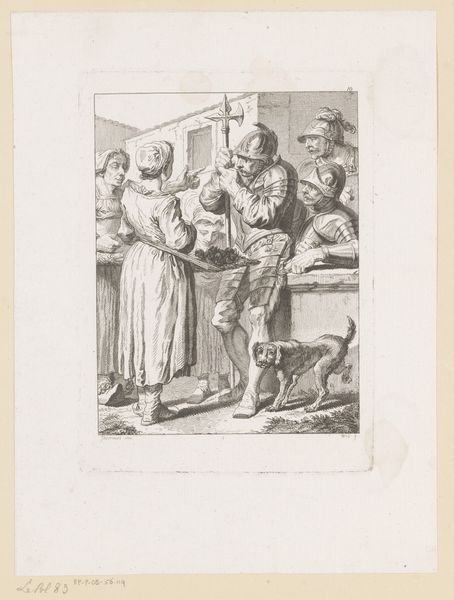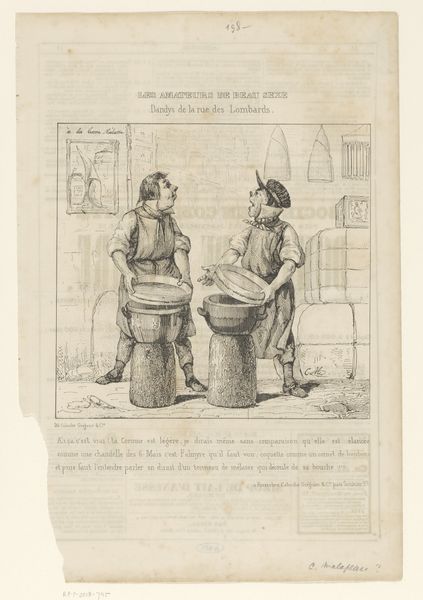
lithograph, print
#
portrait
#
lithograph
# print
#
caricature
#
figuration
#
romanticism
#
genre-painting
Dimensions: height 285 mm, width 189 mm
Copyright: Rijks Museum: Open Domain
Editor: Here we have Paul Gavarni's 1838 lithograph, "Two Actresses Talking in the Wings," currently held at the Rijksmuseum. It seems like a playful scene, almost a caricature of backstage life. What stands out to you? Curator: I’m interested in the lithographic process itself. Think about the labour involved: grinding stones, preparing the greasy inks, the repetitive printing process to disseminate these images. It makes what we see less a rarefied "artwork" and more a manufactured commodity, consumed by a wide audience. Editor: So, you're focusing on its mass-produced nature? Curator: Precisely. The "high art" of Romanticism, as tagged here, often obscures the economic realities of artistic production. Gavarni’s work became popular precisely because these prints were relatively inexpensive and accessible to a burgeoning middle class interested in theatre and satire. Consider the consumption of theatrical imagery: who bought these prints, and what did they *do* with them? Were they collected, pasted into scrapbooks, or displayed in public spaces? These aspects materially shift our perception of Romanticism. Editor: That’s a really interesting point. I hadn't considered how accessible prints like these changed art consumption. The "genre painting" aspect of the tagging feels different when framed this way, more a matter of consumer goods. Curator: Exactly! The print highlights how class anxieties were manufactured, consumed, and satirized through the medium of print. Editor: I’m starting to think differently about art of this period. Looking past the surface image towards how it was actually made and consumed. Curator: Precisely. Materiality reveals a lot about the culture of the period, moving past aesthetic appreciation toward understanding the real conditions of production.
Comments
No comments
Be the first to comment and join the conversation on the ultimate creative platform.

